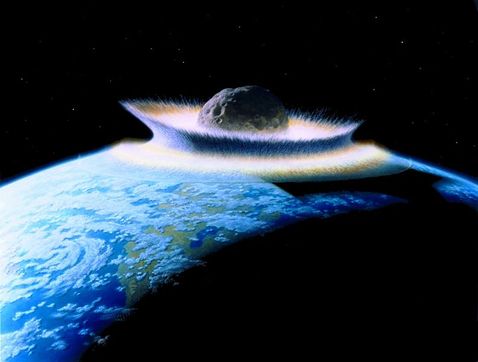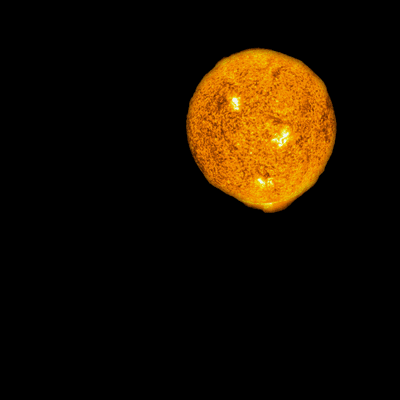Anyway, all the bacteria were floating around in the water when something pretty serious occurred.
A massive asteroid measuring about 36 miles across smashed into the young Earth. We've known for a while that this happened but we didn't know how bad it was. Geologists, geophysicists, and other awesome intellectuals have done some outstanding research into the event. We now know what happened when this asteroid struck the Earth.
When you take something that big and smash it into_ something else, it hurts. Earth didn't like it. The impact was so great that the ENTIRE earth experienced a quake of about 10.8 on the Richter Scale. This earthquake caused more earthquakes and in all, the Earth shook for about a half hour. Mountains literally collapsed.
Remember all that water I was talking about? Yep, you guessed it, tsunamis were everywhere. In fact, it's projected the tsunamis were up to 3,000 feet high.
As with most asteroid strikes, a bunch of red hot Earth was thrown into the atmosphere that eventually scorched the surface of the Earth. Oceans boiled (well at least the tops boiled), the sky turned to fumes, and everything was just not very nice.
But some pretty amazing things happened when this asteroid (and other struck the Earth). No one really knows how or why Earth ended up with tectonic plates that slide under, over, and past each other. Some geologists believe that impacts like the one I just discussed essentially started the process of plate tectonics on Earth. Think about that. Giant rocks smashing Earth eventually caused the crust to fracture enough to become massive islands. These islands float around and collide on top of an ocean of magma. Pretty cool.
Furthermore, and this is conjecture but I'm certain many would agree, this impact probably changed the course of evolution. How? I'm not sure. Maybe we would have twelve fingers instead of ten if the asteroid did not hit. That's the beauty of it! Every little thing in history shaped who we are today. Again, pretty cool.
Anyway, thanks for reading.
Here are some sources:
http://blogs.kqed.org/science/2014/04/10/new-study-examines-geologic-impact-of-a-massive-asteroid-collision-on-ancient-earth/
http://geosociety.wordpress.com/2013/04/28/when-did-plate-tectonics-begin-on-earth-and-what-came-before/


 RSS Feed
RSS Feed
